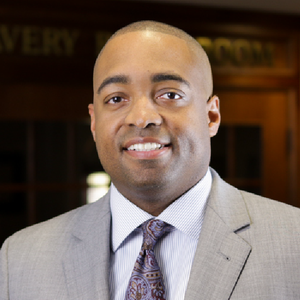
Budget & Tax , Education
Jonathan Small | April 1, 2016
Free Market Friday: The $7,000 teacher pay raise
Jonathan Small
University of Oklahoma President David Boren is promoting a sales tax increase to finance a $5,000 pay raise for all teachers and $125 million for higher education.
Did you know a larger raise could have been given without tax hikes?
We could have already given every public school teacher in Oklahoma a $7,042 raise if we had simply increased our non-teaching staff growth at the same rate as our student enrollment growth.
Those are the findings of a study by Dr. Benjamin Scafidi, an economist whose specialty is school finance.
Using the data that the Oklahoma State Department of Education reports to the U.S. Department of Education, here’s what he found: Between fiscal years 1993 and 2014, enrollment in Oklahoma public schools increased by 14 percent.
The number of teachers rose by a comparable 13 percent. But non-teaching school staffs soared a dramatic 34 percent.
Some defend this hiring binge by claiming that all those people are needed to comply with various state and federal mandates. But if that were the case we would expect to see uniformity among states and school districts. We don’t.
Tulsa Public Schools actually saw student enrollment decrease over those two decades by 3 percent. Tulsa’s teaching ranks declined by 4 percent. But non-teaching personnel jumped an astounding 147 percent.
Tahlequah Schools had 5 percent more students and 7 percent more teachers, but 91 percent more non-teaching workers.
Union Public Schools added 49 percent more students and 50 percent more teachers, but 150 percent more non-teachers.
Clinton saw a 13-percent increase in students and a 2-percent decrease in teachers, yet a 41-percent increase in non-teaching staff.
In Jenks, enrollment increased by 38 percent and teaching staff by 42 percent, while non-teachers went up 76 percent.
Mid-Del enrollment actually dropped 7 percent and its teaching ranks dropped 4 percent. Yet there was an 82-percent increase in non-teaching staff.
Sand Springs saw a decrease in enrollment (2 percent) and teachers (13 percent), yet a 14-percent boost in non-teaching staff.
In district after district, schools hired many times more non-teaching employees than the enrollment and faculty data could justify. Some districts (Deer Creek and Foyil, for example) were more responsible. But examples like that were a small minority.
“Clearly,” Scafidi said, “there is a priority in public education for hiring people outside the classroom.”

Jonathan Small
President
Jonathan Small, C.P.A., serves as President and joined the staff in December of 2010. Previously, Jonathan served as a budget analyst for the Oklahoma Office of State Finance, as a fiscal policy analyst and research analyst for the Oklahoma House of Representatives, and as director of government affairs for the Oklahoma Insurance Department. Small’s work includes co-authoring “Economics 101” with Dr. Arthur Laffer and Dr. Wayne Winegarden, and his policy expertise has been referenced by The Oklahoman, the Tulsa World, National Review, the L.A. Times, The Hill, the Wall Street Journal and the Huffington Post. His weekly column “Free Market Friday” is published by the Journal Record and syndicated in 27 markets. A recipient of the American Legislative Exchange Council’s prestigious Private Sector Member of the Year award, Small is nationally recognized for his work to promote free markets, limited government and innovative public policy reforms. Jonathan holds a B.A. in Accounting from the University of Central Oklahoma and is a Certified Public Accountant.